Right Heart Catheters
Right Heart Catheters
Right heart catheterization was the initial type of cardiac catheterization introduced by Werner Forssmann in 1929, who did self-catheterization [1]. But later, with development of coronary interventions, it became less commonly done. Now there is a renewed interest as it is useful in the evaluation of pulmonary hypertension [2] and heart failure as well as in congenital heart diseases.
Though the catheter used by Forssmann was a ureteral catheter, dedicated right heart catheters came into use later. Cournand catheter is a right heart diagnostic catheter named after the Nobel laureate André Cournand, who shared the Nobel Prize with Dickinson Richards and Werner Forssmann, in 1956 [3].

Cournand catheter has an end hole and no side holes. Hence it is suitable for pulmonary artery wedge pressure measurements and blood sampling.
Being a single hole catheter, it can easily get blocked and needs frequent flushing, especially in those with thrombotic tendency like congenital cyanotic heart disease. Cournand catheter is made of woven Dacron and has a polyurethane covering. It has a very gradual distal curve and a tapered tip.
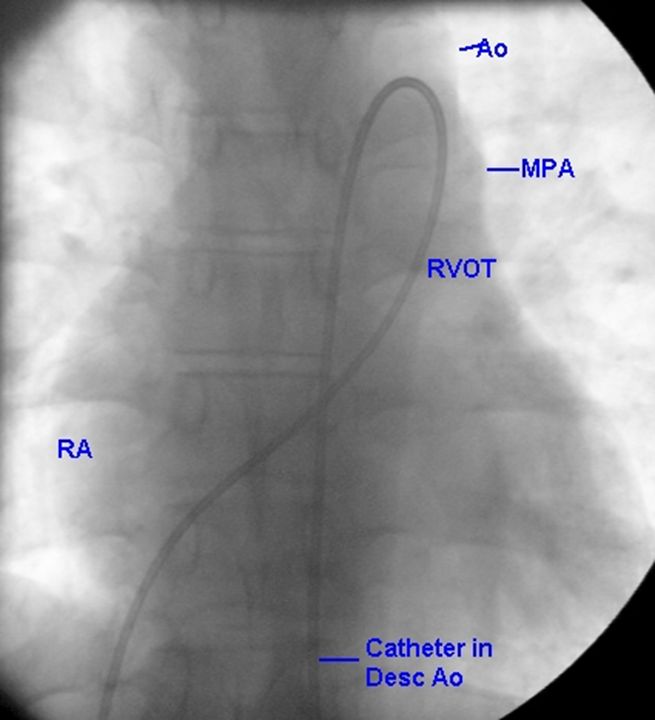
Fluoroscopic view of Cournand catheter passing from inferior vena cava to right atrium, right ventricle, pulmonary artery and across a patent ductus arteriosus into the descending aorta.
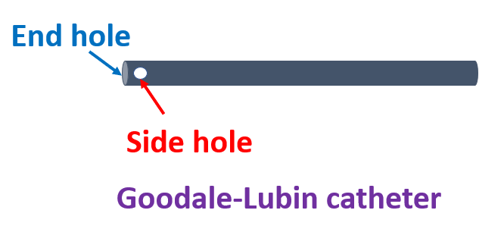
Goodale-Lubin catheter is also a woven Dacron catheter with polyurethane coating. It has an end hole and two laterally placed side holes near the end hole. Hence it is not used for wedge pressure measurement.
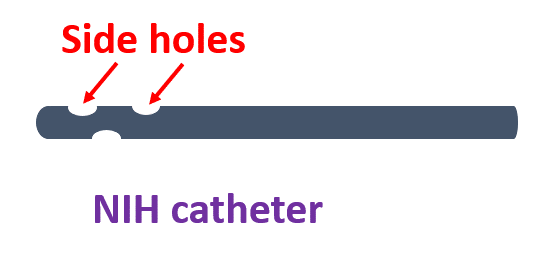
NIH catheter has no end hole but has multiple side holes. A guidewire cannot be used as there is no end hole. NIH catheter can be used for ventriculography.
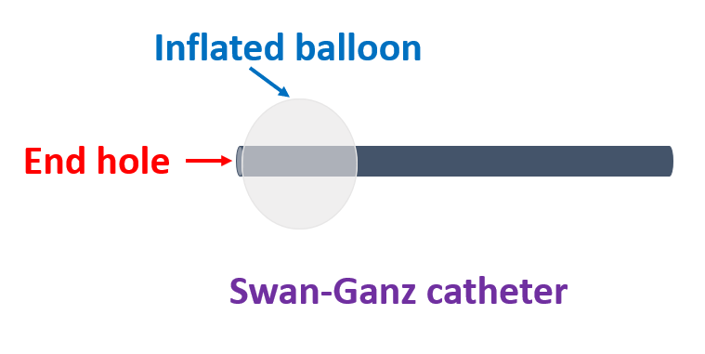
Swan-Ganz catheter is a balloon floatation catheter used for bedside pulmonary artery catheterization to monitor pressure continuously.
Being a flow directed catheter it can be introduced without the help fluoroscopy. Multiple side lumens are available for blood sampling and medication. The balloon is inflated when the tip pressure shows right atrial pressure tracing.
It can be used for checking the balloon occlusion pressure in distal pulmonary arteries, which will correspond to pulmonary arterial wedge pressure and left atrial pressure. But balloon should not be kept continuously inflated in the pulmonary artery.
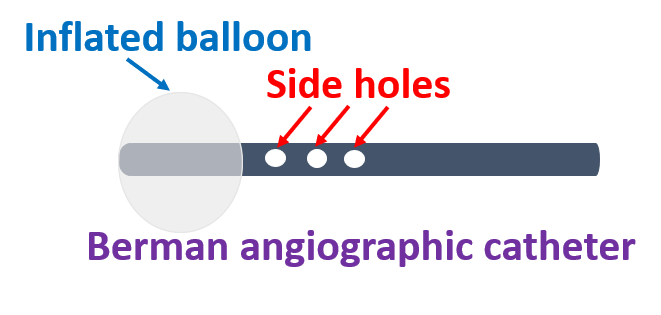
Berman angiographic catheter is a flow directed balloon tipped catheter with multiple side holes proximal to the balloon, used for ventriculography.

Reverse Berman angiographic catheter has side holes distal to the balloon. It is useful to give proximal occlusion while injecting contrast into a branch pulmonary artery.
References
- Davies MK, Hollman A. Werner Forssmann. Heart. 2002 May;87(5):409. PMCID: PMC1767093.
- Rosenkranz S, Preston IR. Right heart catheterisation: best practice and pitfalls in pulmonary hypertension. Eur Respir Rev. 2015 Dec;24(138):642-52.
- Braunwald E. André Cournand, Bellevue’s Cardiopulmonary Laboratory, and Research on Heart Failure. Ann Am Thorac Soc. 2018 Feb;15(Suppl 1):S12-S14.
